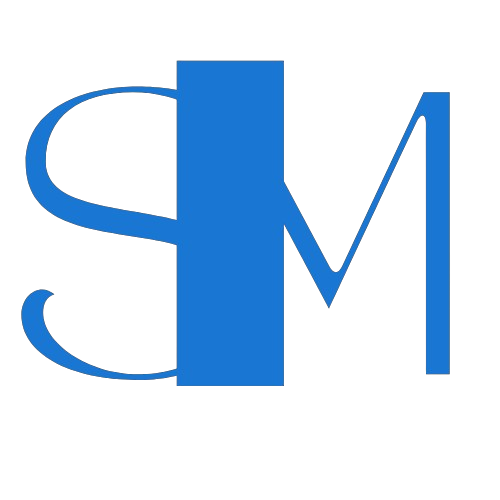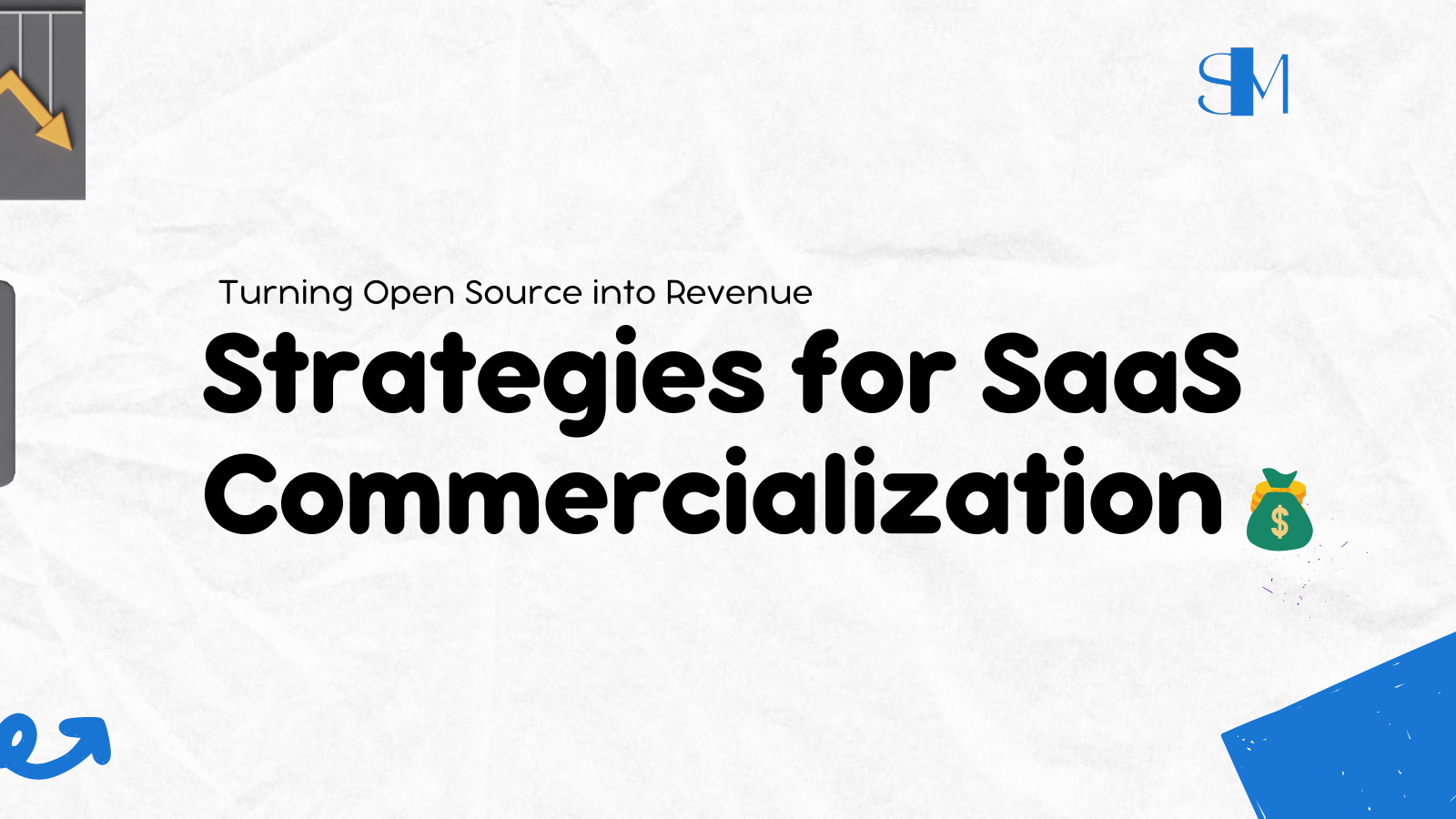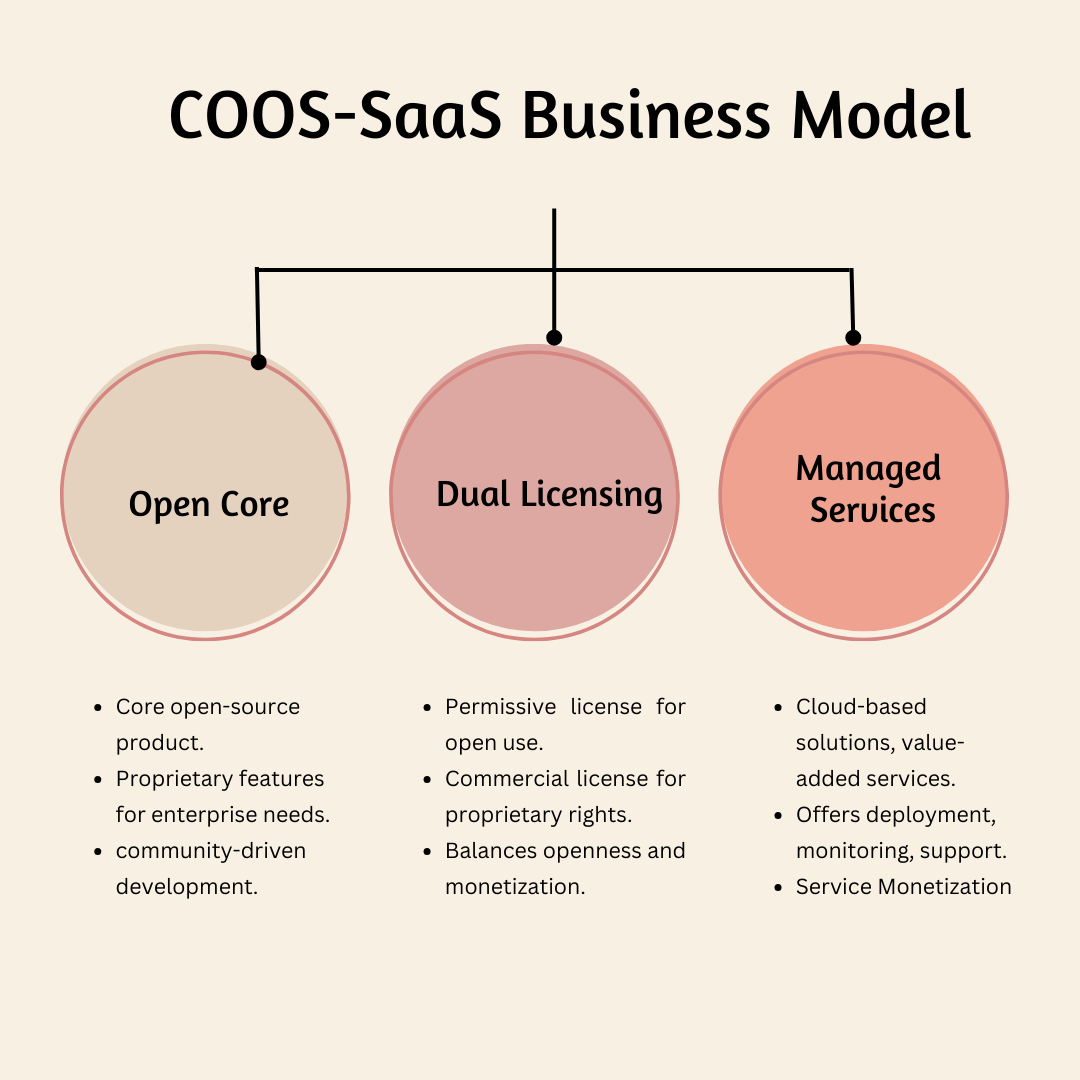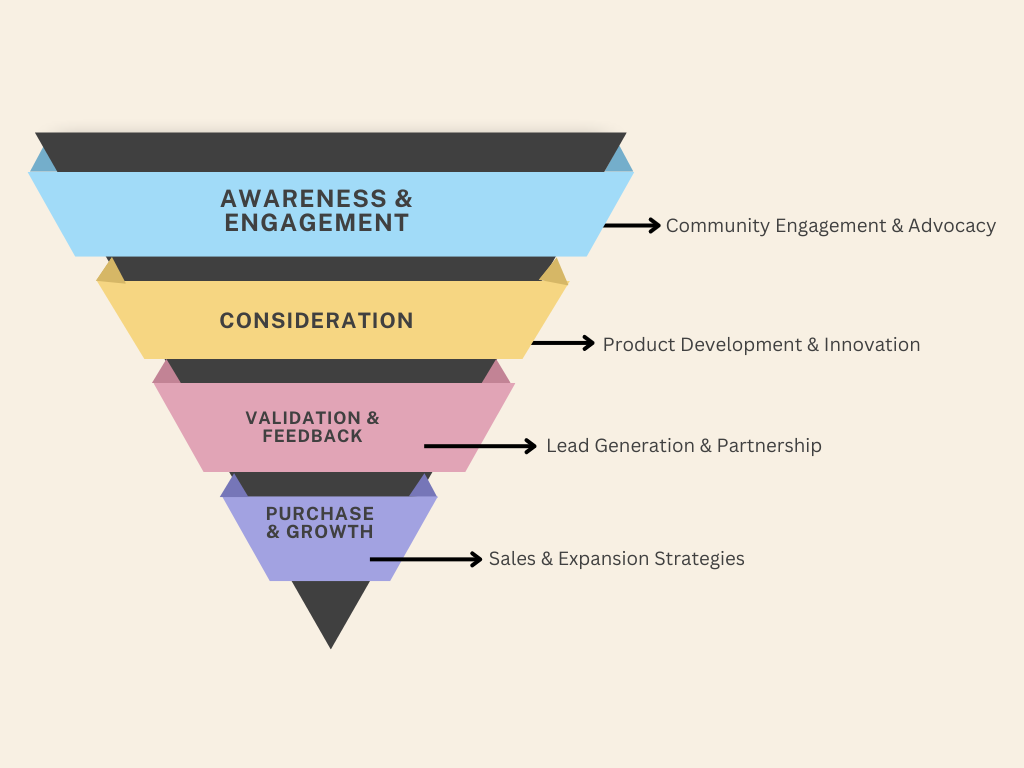Turning Open Source into Revenue: Strategies for SaaS Commercialization.
 Empowering Your SaaS Journey.
Empowering Your SaaS Journey.Table of contents
- What is Software as a Service (SaaS) ?
- What is Open Source SaaS (CooS- SaaS) ?
- A Comparative Glance: SaaS vs. CooS-SaaS
- Benefits of Commercial Open Source SaaS (CooS-SaaS)
- Foundations of Commercial Open-Source SaaS
- Choosing the right Business Model for your Commercial open source SaaS
- Sales Funnel for Commercial Open source SaaS
- Go-to-Market Strategies for CoSaaS
- Conclusion

The software landscape is evolving at an unprecedented pace, driven by innovation and the ever-growing demand for accessible, robust solutions. Traditional Software as a Service (SaaS) models have dominated the market, offering ease of use and scalability, but often at the cost of vendor lock-in and limited customization. Commercial Open Source SaaS (CooS-SaaS) emerges as a compelling alternative, disrupting the status quo and offering a future-proof approach to software development and deployment.
What is Software as a Service (SaaS) ?
SaaS refers to a software delivery model where users access applications over the internet without installing them on their own devices. SaaS offers several advantages, including:
Accessibility: Eliminates the need for local installation and maintenance.
Scalability: Adapts to user needs easily and efficiently.
Cost-effectiveness: Eliminates upfront hardware and software costs.
Regular updates: Ensures access to the latest features and security patches.
What is Open Source SaaS (CooS- SaaS) ?
OS SaaS builds upon the core principles of SaaS while incorporating the power of open source development. Key characteristics include:
Open-source core code: The core codebase is publicly available and modifiable, fostering collaboration and innovation.
Commercialization: Additional features, support, and customization are offered as paid services by vendors.
Transparency: Users gain insights into the software's inner workings, building trust and fostering community engagement.
A Comparative Glance: SaaS vs. CooS-SaaS
Feature | SaaS | CooS-SaaS |
Core Code | Proprietary | Open-source |
Customization | Limited | Flexible |
Vendor Lock-in | High | Low |
Developer Community Involvement | Restricted | Encouraged |
Transparency | Black box | Open and verifiable |
Cost | Typically subscription-based | Flexible pricing, including subscriptions and open-source contributions |
Benefits of Commercial Open Source SaaS (CooS-SaaS)
The codes are public, right ? They aren’t the unique selling proposition or differentiating factor for open source SaaS. So, what truly differentiates open source companies in the market? The essence lies in leveraging the intrinsic strengths of open source: community and development philosophy. Here are three key competitive advantages for independent open source firms:
Avoiding Vendor Lock-In: Enterprise customers actively seek solutions that prevent them from being tied to a single vendor. Open source offerings inherently provide the freedom to adopt, modify, and integrate software without fear of proprietary constraints.
Trust in Code Authors: Enterprises prefer to procure software from individuals or teams who have actively contributed to its development. This trust in the creators fosters confidence in the reliability and integrity of the software.
Specialized Expertise: Open source companies often possess niche expertise that larger corporations lack. This specialized knowledge enables them to address unique challenges and provide tailored solutions that resonate with their target audience.
Combining these three elements forms a potent competitive value proposition, reinforcing the resilience of stand-alone open source companies against potential displacement by major cloud providers.
Foundations of Commercial Open-Source SaaS
The world of open source software is thriving, and navigating its intricacies can be challenging. In this article, we delve into the three pillars that underpin the success of open source businesses: project-community fit, product-market fit, and value-market fit. These pillars form a sequential journey, starting as stages and evolving into pillars that require constant attention and balance for long-term sustainability.
Project-Community Fit: Cultivating Your Developer Ecosystem
This initial pillar focuses on building a critical mass of engaged developers around your project. Strong indicators of success include GitHub stars, contributor growth, and active participation in the codebase. While project size can vary, fostering a passionate and growing community is key.
Remember, open source projects can originate anywhere, but a dedicated project leader, often the future CEO, is crucial. Achieving project-community fit necessitates constant engagement and appreciation for your developers. Striking a balance between leadership and inclusivity is vital – provide clear direction while valuing every voice and contribution.
This balance fosters healthy growth and attracts further participation. Investors often favor funding projects led by such individuals, as they possess intimate knowledge of the codebase and embody the ethos that drives the developer community.
Product-Market Fit: Solving User Pain Points
With a vibrant developer community established, the next step is understanding and measuring product-market fit. Ask yourself:
What problem does your software solve?
Who are the target users?
What alternatives exist?
Without clear answers, projects can lose momentum. Once these questions are addressed, organic adoption, measured by downloads, indicates good product-market fit. Remember, this paves the way for future sales engagement, as satisfied users become potential leads for value-added offerings.
While working towards product-market fit, consider how your commercial product will differentiate itself and offer value worth paying for. A common pitfall is creating an overly successful open source product, leaving no room for value-market fit, hindering revenue generation. Therefore, plan ahead and consider future commercialization possibilities.
Value-Market Fit: Monetizing Your Impact
The final, often most challenging, stage is achieving value-market fit and generating revenue. While product-market fit caters to individual users, value-market fit typically targets departments and enterprises. The key lies in focusing on what customers value and are willing to pay for, not just what you can monetize. Value-market fit often transcends product functionality and hinges on adoption and the value provided. Open source offers not just features, but operational benefits and scalability. So, when crafting a commercial offering, ask yourself:
Does your product solve a core business problem or enhance operations?
Is it difficult to replicate or find alternatives?
Are there at-scale capabilities required for teams or organizations missing in the open source version?
Choosing the right Business Model for your Commercial open source SaaS
How can developers and businesses leverage open-source projects to create sustainable revenue streams while maintaining the ethos of openness and collaboration? Each commercialization model comes with its own set of considerations and trade-offs. Companies must carefully evaluate factors such as target market, competitive landscape, developer community dynamics, and revenue objectives when selecting the most suitable approach. While Open Core and Dual Licensing offer direct monetization opportunities through proprietary features or licenses, Managed Services provide a recurring revenue stream by delivering value-added services on top of the open-source software.

Open Core Model
The Open Core model involves offering a core open-source product alongside additional proprietary features or services. This approach allows companies to capitalize on the popularity and community-driven development of their open-source offering while monetizing premium features or support for enterprise clients. By providing essential functionality as open source, companies can attract a wide user base and foster community engagement, while proprietary add-ons cater to the needs of enterprise customers seeking enhanced features, security, or support.
Dual Licensing Model
Dual Licensing entails releasing an open-source version of the software under a permissive license, such as Apache or MIT, while offering a separate commercial license with additional restrictions or features. This model grants users the freedom to use, modify, and distribute the open-source version while providing an avenue for businesses to generate revenue by selling commercial licenses to organizations that require proprietary use or redistribution rights. Dual Licensing strikes a balance between openness and monetization, offering flexibility for both individual users and commercial entities.
Managed Services Model
Managed Services involve offering cloud-based hosting or managed solutions built around an open-source project. This model capitalizes on the increasing adoption of cloud computing and allows companies to provide value-added services, such as deployment, monitoring, maintenance, and support, to users of the open-source software. By leveraging their expertise in managing complex infrastructure, companies can monetize their services while ensuring seamless integration with the open-source ecosystem.
Sales Funnel for Commercial Open source SaaS
As open-source businesses mature, the integration of open-source efforts with commercial endeavors becomes pivotal in shaping a robust go-to-market strategy. This strategy is characterized by four distinct stages in the sales funnel.
Unlike traditional models, where sales and marketing predominantly focus on promoting paid features and subscriptions, the open-source approach emphasizes cultivating awareness and interest among developers, driving word-of-mouth promotion through community engagement.
Additionally, while traditional SaaS models rely on closed-door sales techniques to convert leads into paying customers, open-source SaaS adopts a community-focused approach, prioritizing developer feedback and collaboration throughout the sales funnel.
This shift not only fosters transparency and trust but also encourages active participation from the developer community, ultimately leading to a more sustainable and inclusive business model. Now, let's break down each stage of the sales funnel for open-source SaaS:

Awareness & Engagement –*Community Engagement & Advocacy*
At the outset, cultivating awareness and interest among developers forms the cornerstone of the open source go-to-market funnel. Developer community management plays a central role in driving word-of-mouth promotion, measured by metrics like user registrations and downloads. Founders often act as initial evangelists, and as the company grows, dedicated developer evangelists with technical prowess and strong communication skills become invaluable. While alignment between sales and evangelism is crucial, community managers should prioritize generating interest and fostering community engagement without appearing overly sales-driven. Deciding whether to align the company's name and brand with the open source project requires careful consideration, balancing brand cohesion with the risk of alienating the open source community. Accurate measurement of user registrations and interest is essential to avoid relying on superficial metrics.
Consideration – Product Development & Innovation
Effective product management becomes paramount in the consideration stage, where the goal is to maximize developer and user adoption and satisfaction. Managing both closed and open source roadmaps, communicating decisions transparently, and incorporating community feedback are key functions of product management. Open source companies often manage two roadmaps simultaneously, necessitating a clear framework to delineate between free and paid features. Transparency in research and development and the integration of community feedback into product roadmaps are vital for maintaining community trust and engagement. Building analytics into the product enables data-driven insights into user behavior and potential sales opportunities, facilitating experimentation with product packaging to optimize the balance between free and paid offerings.
Validation & Feedback – Lead Generation & Partnership Development
The evaluation and intent stage focuses on validating and refining theories through lead generation and business development efforts. Outbound marketing campaigns target specific market segments identified through developer evangelism, while sales development representatives adopt a customer-centric approach to qualifying leads based on organizational representation and alignment with enterprise goals.
Purchase & Growth – Sales & Expansion Strategies
In the final stage, sales motions transition from lead qualification to purchase and expansion. Self-serve and sales-serve motions cater to individual and departmental buyers, respectively, leveraging both bottom-up and top-down approaches to drive revenue growth. Successful coordination between organic growth and enterprise sales hinges on maintaining a delicate balance between open source and commercial offerings, ensuring value alignment across all stages of the funnel.
Difference between Traditional SaaS and CoSaaS.
Stage | Traditional SaaS | CoSaaS |
Awareness & Engagement | Engages in marketing strategies to promote paid features and subscriptions. | Cultivates awareness and interest among developers, driving word-of-mouth promotion through community engagement. |
Consideration | Evaluates user interest and readiness to invest in full-fledged products. | Focuses on maximizing developer and user adoption and satisfaction through effective product management and community feedback. |
Validation & Feedback | Validates and refines market hypotheses through lead generation and business development efforts. | Refines market hypotheses through lead generation, with an emphasis on community engagement and developer feedback. |
Purchase & Growth | Implements traditional sales techniques to convert leads into paying customers. | Transitions from lead qualification to purchase and expansion, targeting individual and departmental buyers through a community-focused approach. |
Go-to-Market Strategies for CoSaaS
Though the Go-to-Market strategy shares similarities with traditional SaaS models, it possesses distinct elements crucial for the success of Commercial Open Source Software as a Service (CoSaaS). These strategies are tailored to leverage the unique characteristics of open-source development while addressing the needs of a diverse user base. Below, we delve into key strategies that set CoSaaS apart and ensure its effectiveness in engaging developers, enticing users, and fostering sustainable growth.
Leverage the Open Source Community
CoSaaS companies should actively engage with developers and users who contribute to and utilize their open-source software. This involvement includes participating in forums, discussion boards, and community events to address their needs and incorporate their feedback into the development process. By fostering a sense of collaboration and ownership within the community, CoSaaS companies can build a loyal user base and attract new contributors.
Offer Freemium Models
Providing a basic open-source version of the software allows users to experience its functionality and benefits firsthand. This basic version should offer enough value to attract users while leaving room for upselling premium features and support. CoSaaS companies can implement clear pathways for users to upgrade to advanced features and support levels, enticing them with the added value and benefits of the paid offerings.
Highlight Unique Value Proposition
CoSaaS companies must clearly communicate the benefits of their paid services over the free version. This includes emphasizing aspects such as enhanced security measures, greater customization options, and access to expert support. By articulating the unique value proposition of their paid offerings, CoSaaS companies can justify the investment for users seeking additional features and support.
Build Strategic Partnerships
Collaborating with complementary businesses can help CoSaaS companies expand their reach and leverage specialized expertise. By forming strategic partnerships with companies that offer complementary services or products, CoSaaS companies can tap into new markets, access additional resources, and enhance the overall value proposition for their customers. These partnerships can range from technology integrations to joint marketing initiatives, ultimately strengthening the CoSaaS company's position in the market.
Foster Transparency and Trust
CoSaaS companies should prioritize transparency in their pricing, development roadmap, and decision-making processes. Being open about pricing structures helps users understand the value they're receiving for their investment. Similarly, providing visibility into the development roadmap allows users to anticipate future updates and enhancements. Finally, involving the community in decision-making processes fosters trust and demonstrates a commitment to collaboration and inclusivity.
By implementing these Go-to-Market Strategies, CoSaaS companies can effectively engage with their target audience, differentiate themselves from competitors, and build a sustainable business model based on open-source principles.
Conclusion
The commercialization of open-source software presents a dynamic arena filled with both challenges and opportunities. Embracing innovative models such as Open Core, Dual Licensing, and Managed Services, companies can strike a delicate balance between fostering community collaboration and generating sustainable revenue streams.
However, the journey doesn't end there. Success in open-source commercialization hinges on a deep understanding of user needs, a vibrant developer community, and a commitment to delivering value-driven solutions that empower both creators and consumers of open-source software.
By nurturing these principles and embracing the ethos of openness and collaboration, companies can position themselves at the forefront of the software revolution, driving innovation, and shaping the future of technology. As we venture into this exciting new frontier, the possibilities are endless, and the potential for positive impact is immense.
Together, let us continue to push the boundaries of what's possible, leveraging the power of open source to create a brighter, more inclusive future for all.
Subscribe to my newsletter
Read articles from Empowering Your SaaS Journey. directly inside your inbox. Subscribe to the newsletter, and don't miss out.
Written by

Empowering Your SaaS Journey.
Empowering Your SaaS Journey.
Greetings ! My name is Rupesh. With over 7 years of hands-on experience in the B2B SaaS and service domain, I am dedicated to empowering SaaS founders with valuable resources and actionable advice. My mission is to equip entrepreneurs with the knowledge and insights needed to succeed in the competitive world of SaaS.